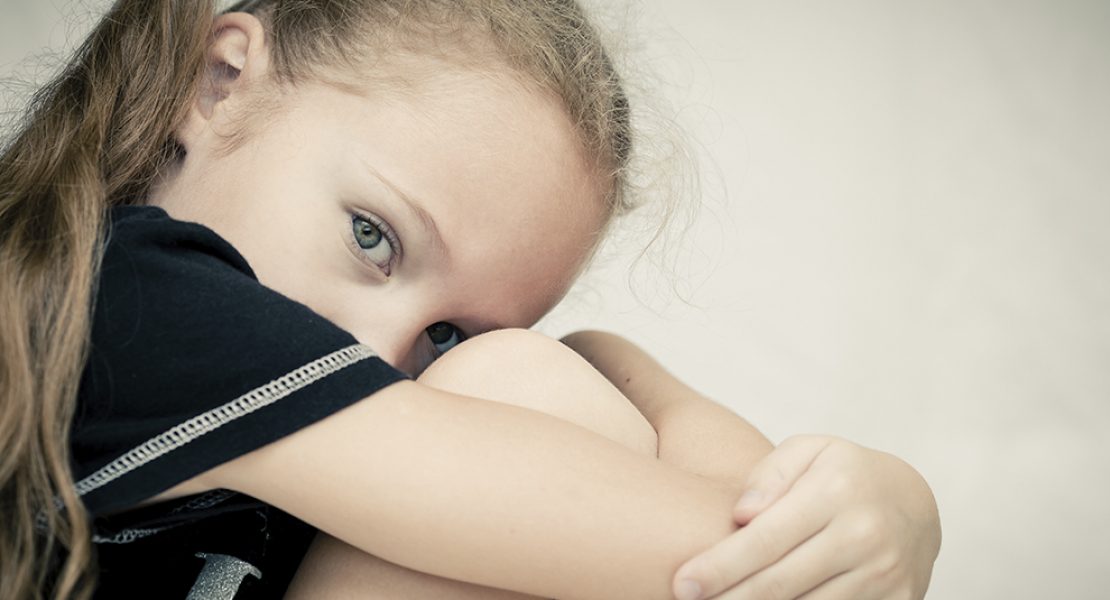Generation Anxious

More kids are stressed out than ever. Here’s how to help them chill.
Worries, nervousness, knots in the stomach—anxiety is a common and pervasive thread woven through the daily lives of millions of Americans. And according to the Anxiety and Depression Association of America, as many as one in eight children feel the effects of anxiety.
Countless fears cause anxious feelings for kids and adults alike, from insects to separation from a loved one to interactions with peers and bullies to bad weather. The symptoms of anxiety are just as abundant, often manifesting as worry, panic, phobias, fearfulness, social withdrawal, avoidance, or irritability. Compulsive behaviors, stomachaches, headaches, and trouble sleeping can also point to anxiety.
“What most people who experience anxiety have in common is an overwhelming sense of unease and emotional discomfort in specific situations, usually triggered by a cascade of negative thoughts,” says Signe Whitson, director of counseling at The Swain School in Allentown and an international educator on bullying prevention and child and adolescent mental health.
“We have a generation of kids who are less independent and self-reliant–and thus more anxious.”
Across her 20 years of professional work, Whitson has noticed an undeniable rise in the number of young people facing anxiety. Technology may be to blame for some of this anxiety, as kids are more connected than ever and less apt to spend time playing, unwinding, and generally relaxing or allowing themselves to experience boredom.
“Many experts also cite the dearth of outdoor, unstructured play time as a catalyst for young people’s rising anxiety levels,” Whitson shares. “Play is the work of childhood—it is how kids work through fears and deal with hardships in a safe way. With so many adult-led activities dominating kids’ schedules, we have a generation of kids who tend to be less independent and self-reliant—and thus more anxious when asked or expected to do things on their own.”
Parents suffering from anxiety can also deeply impact their kids. “When parents seem fearful, kids often get the message that the situation must not be safe,” say Whitson. “In their minds, they may think, ‘If my mom or dad—the person who keeps me safe—cannot handle this situation, it must really be bad.’ Their anxiety levels predictably rise when they see their parents worry…and just as predictably fall back to normal levels when they see in their parents’ eyes that a situation is manageable and in control.”
Parents can serve as role models remaining calm, never freaking out, and using coping strategies and skills to manage anxiety as needed, like exercise or deep breathing, says Whitson. As a parent, it’s also important to watch for signs that your child may need professional support, like changes in eating or sleeping patterns and withdrawal from activities they once enjoyed.
“When symptoms such as repetitive thoughts, compulsive behaviors, panic attacks, or reliving traumatic memories interfere with a child’s ability to function in school or daily living, it is time to consult a professional to help your child gain strategies and skills for managing their anxiety,” Whitson says.
Sometimes anxiety becomes so entwined in a person’s thoughts that it may seem like it’s unavoidable. Whitson sees knowledge as power, especially with very young kids. That’s why she teaches them what’s happening in their brains with “the worries,” as she calls them, and explains that everyone worries from time to time.
DIY Deep Breathing
To help kids find their center and focus on the present moment instead of the stressful what-ifs, try this simple deep breathing exercise from Signe Whitson:
1. Give your child a colorful pinwheel.
2. Demonstrate how to take a deep breath in through the nose for 3 to 5 seconds, and watch as the belly fills with air.
3. Exhale slowly and steadily through the mouth for 3 to 5 seconds, making the pinwheel spin.
4. Repeat this cycle 3 to 5 times, then ask your child to note any changes in bodily sensations, such as an increased feeling of calm.
“Our brains have an alarm system and when we are in a dangerous situation, our alarm goes off to keep us safe,” Whitson explains. “Having an alarm in our brain is a really good thing—these alarms keep us safe by letting us know when danger is present. However, sometimes the alarms in our brain get a little overactive and make us think there is danger around, even when danger doesn’t exist. This doesn’t happen because our brains are broken or bad—it happens because our brains are powerful and active and want to keep us safe.
“When we realize that a false alarm has gone off, however, this is the time for us to do one of two things—breathe or move. Scientists have shown us that breathing and movement are the two best ways to turn off the alarm in our brains when it is being overactive.”
The act of simply listening to your child and helping them feel heard and understood can go a long way, too, says Whitson. “Acknowledging a young person’s feelings and giving them the opportunity to put language to the uncomfortable experience of anxiety can make all the difference in their ability to cope and regain a sense of control.”





















